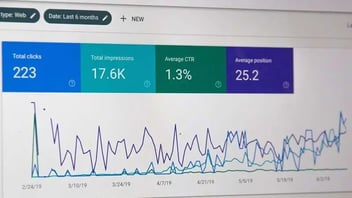Ce este un XML Sitemap și ce face acesta pentru SEO?
Site-ul dvs. este plin de conținut fantastic, dar vi se pare că strigați în golul internetului? Motoarele de căutare precum Google au nevoie de puțină îndrumare pentru a vă găsi cele mai bune pagini. Aici intervin sitemaps-urile XML.
Gândiți-vă la ele ca la o hartă detaliată pentru motoarele de căutare, asigurându-vă că acestea nu ratează nimic important. Dacă faceți acest lucru corect, veți vedea cum site-ul dvs. va urca mai sus în rezultatele căutărilor, aducând mai mulți vizitatori potriviți pe site-ul dvs.

Ce sunt XML Sitemaps?
XML înseamnă Extensible Markup Language.
Este un limbaj de codificare standardizat care facilitează schimbul de date între mașini, punând accentul pe simplitate și versatilitate. În SEO, XML este un format structurat pentru prezentarea informațiilor despre conținutul unui site web către motoarele de căutare.
În esența sa, sitemaps XML servește ca o foaie de parcurs cuprinzătoare pentru crawlerele motoarelor de căutare. Imaginați-vă site-ul dvs. ca un oraș vast și motoarele de căutare ca niște turiști sârguincioși care îi explorează străzile. Harta site-ului XML acționează ca o hartă a orașului, oferind direcții clare și evidențiere pentru a se asigura că nicio locație importantă nu trece neobservată.
Atunci când crawlerele motoarelor de căutare navighează pe un site web, acestea se bazează pe aceste hărți de site XML pentru a descoperi și indexa eficient paginile acestuia. Acest director organizat informează motoarele de căutare cu privire la ierarhia și relațiile dintre diferitele pagini, facilitând o căutare mai inteligentă și mai raționalizată.
67 % dintre webmasteri raportează o creștere a ratei de crawl după implementarea unui sitemap.
Dincolo de simpla navigare, sitemaps XML sunt esențiale pentru a semnala importanța fiecărei pagini și frecvența actualizărilor. Acest strat suplimentar de informații permite motoarelor de căutare să acorde prioritate conținutului proaspăt și relevant, aliniindu-se la preferințele în continuă evoluție ale utilizatorilor online.
În plus, formatul structurat al XML facilitează analiza și înțelegerea eficientă a informațiilor de către roboții motoarelor de căutare. Acest lucru accelerează procesul de căutare și minimizează șansele de a trece cu vederea pagini vitale.
În esență, sitemaps XML acționează ca o legătură între proprietarii de site-uri web și motoarele de căutare, transmițând schița arhitecturii site-ului. Această transparență facilitează o relație mai armonioasă cu motoarele de căutare, influențând în cele din urmă vizibilitatea și clasarea site-ului în rezultatele căutărilor.
Construirea Sitemap-ului XML
Site-urile web generează automat sitemaps XML, în special cele construite pe sisteme de gestionare a conținutului (CMS) sau platforme de dezvoltare web. Majoritatea platformelor CMS moderne, cum ar fi HubSpot Content Hub sau WordPress, au pluginuri sau funcții integrate care generează și actualizează automat sitemap-urile XML pentru site-uri web.
Aceste sitemap-uri XML generate automat se bazează pe structura și conținutul site-ului web. Sitemap-ul XML este ajustat dinamic pentru a reflecta aceste modificări pe măsură ce creați, actualizați sau eliminați pagini de pe site. Această automatizare asigură faptul că motoarele de căutare dispun de o hartă clară și actualizată a structurii site-ului dvs. web, facilitând explorarea și indexarea eficientă.
Pentru site-urile web care nu utilizează platforme CMS, diverse instrumente online și aplicații autonome pot ajuta la generarea hărților site-ului XML. Aceste instrumente vă permit adesea să personalizați anumite aspecte ale hărții site-ului, cum ar fi specificarea nivelurilor de prioritate pentru diferite pagini.
Deși generarea automată este norma, proprietarii de site-uri web trebuie să verifice existența și buna funcționare a sitemap-ului lor XML. De obicei, puteți găsi harta site-ului XML adăugând "/sitemap.xml" la domeniul site-ului dvs. web (de exemplu, www.example.com/sitemap.xml). Verificarea și transmiterea regulată a hărții site-ului către motoarele de căutare, fie manual, fie prin intermediul instrumentelor pentru webmaster, reprezintă o bună practică pentru a vă asigura că motoarele de căutare cunosc cele mai recente actualizări ale site-ului dvs. web.
Optimizarea XML Sitemaps pentru un impact maxim
Este important să rețineți că simpla existență a unui sitemap XML nu este suficientă; optimizarea acestuia pentru un impact maxim este esențială.
Includeți paginile esențiale
Fundația unui sitemap XML eficient constă în incluziunea sa. Fiecare colțișor al unui site web, de la conținutul de bază la bijuteriile ascunse, ar trebui să fie reprezentat în XML sitemap. Această incluziune asigură că crawlerii motoarelor de căutare găsesc o imagine de ansamblu cuprinzătoare a conținutului site-ului în timpul explorării lor, împiedicând paginile valoroase să scape prin fisurile digitale.
Cele mai bune practici impun ca paginile principale și materialele suplimentare, cum ar fi imaginile, videoclipurile sau PDF-urile, să fie luate în considerare în harta site-ului XML. Astfel, proprietarii de site-uri web oferă o imagine holistică a prezenței lor digitale, sporind probabilitatea ca aceste active să fie indexate corespunzător și să apară în rezultatele căutărilor relevante.
Prioritizarea URL-urilor pentru un crawling eficient
În timp ce incluziunea este esențială, prioritizarea strategică în cadrul hărții site-ului XML poate avea un impact semnificativ asupra eficienței urmăririi de către motoarele de căutare. Atribuirea de niveluri de prioritate URL-urilor în cadrul hărții site-ului comunică importanța relativă a fiecărei pagini pentru motoarele de căutare. Această prioritizare influențează frecvența de explorare, asigurându-se că paginile critice sunt revizitate mai frecvent decât cele mai puțin vitale.
În plus, utilizarea atributului "changefreq" pentru a semnala cât de des este actualizată o pagină ajută motoarele de căutare să înțeleagă dinamica conținutului. Această abordare nuanțată a creării sitemap XML optimizează procesul de urmărire, permițând motoarelor de căutare să își aloce resursele în mod judicios și să rămână în acord cu peisajul în continuă schimbare al unui site web.
Mențineți sitemap-urile XML la zi
Ecosistemul digital este în continuă schimbare, site-urile web evoluând, adăugând sau modificând pagini, iar strategiile de conținut adaptându-se la tendințele emergente. În acest mediu dinamic, menținerea relevanței sitemap-urilor XML este extrem de importantă. Actualizările periodice asigură că crawlerii motoarelor de căutare sunt înarmați cu cele mai recente informații, împiedicându-i pe aceștia să irosească resurse pe conținut învechit sau irelevant.
Site-urile cu sitemaps optimizate înregistrează, în medie, o creștere de 32 % a traficului organic în decurs de șase luni.
Proprietarii de site-uri web trebuie să își actualizeze prompt hărțile site-urilor XML ori de câte ori apar modificări semnificative, cum ar fi adăugarea de pagini noi, eliminarea conținutului învechit sau modificarea priorităților paginilor. Acest angajament față de actualizare sporește acuratețea rezultatelor motoarelor de căutare și favorizează o relație pozitivă între site-ul web și motoarele de căutare.
Trimiteți Sitemaps către motoarele de căutare pentru actualizări
Dincolo de actualizările interne, trimiterea proactivă a sitemap-urilor XML către motoarele de căutare este o strategie proactivă pentru a asigura cunoașterea în timp util a oricăror modificări. Majoritatea motoarelor de căutare oferă instrumente pentru webmasteri unde pot fi trimise direct sitemaps. Această depunere determină motoarele de căutare să reevalueze sitemap-ul, încorporând prompt orice modificări și actualizări în algoritmii lor de indexare.
Transmiterile regulate reprezintă o strângere de mână între site-ul web și motoarele de căutare, semnalând un angajament față de transparență și colaborare.
Sitemaps XML și experiența utilizatorului
Pe lângă faptul că modelează eficiența crawlerelor motoarelor de căutare, sitemaps XML ajută la îmbunătățirea navigării utilizatorului pentru o UX mai bună.
Structura clară a site-ului
La baza unei experiențe pozitive a utilizatorului se află claritatea și intuitivitatea navigării pe site. Sitemaps XML contribuie în mod semnificativ la acest aspect, acționând ca un orchestrator din spatele scenei, asigurând călătoria utilizatorului prin intermediul unui site web fără probleme și fără frustrări.
Furnizând motoarelor de căutare o hartă cuprinzătoare a structurii unui site web, sitemaps-urile XML aduc beneficii indirecte utilizatorilor care navighează pe site. Ierarhia organizată prezentată în harta site-ului permite utilizatorilor să înțeleagă relația dintre diferite pagini și secțiuni, ajutându-i să găsească cu ușurință informațiile relevante.
Impactul este deosebit de pronunțat în cazul site-urilor cu conținut extins sau structuri complexe, cum ar fi platformele de comerț electronic sau publicațiile de mari dimensiuni. Utilizatorii pot localiza rapid pagini sau categorii specifice fără căutări manuale exhaustive. Această descoperire îmbunătățită economisește timp și stimulează o percepție pozitivă a site-ului web, contribuind la satisfacția generală a utilizatorilor.
Navigație ușor de utilizat
Influența sitemap-urilor XML asupra experienței utilizatorilor se extinde dincolo de conceptul abstract de structură a site-ului. Dezvoltatorii și designerii web pricepuți pot exploata informațiile din hărțile site-urilor XML pentru a crea interfețe de navigare mai ușor de utilizat. Prin alinierea elementelor vizuale de navigare ale unui site web la structura prezentată în harta site-ului XML, designerii pot asigura consistența și coerența interfeței cu utilizatorul.
Această sincronizare între harta site-ului XML și meniurile de navigare de pe site îmbunătățește predictibilitatea pentru utilizatori. Atunci când structura reflectată în harta site-ului XML este reflectată în elementele de navigare vizibile, utilizatorii pot anticipa mai intuitiv locația conținutului dorit. Acest lucru contribuie la o experiență pozitivă a utilizatorului și încurajează utilizatorii să exploreze pagini suplimentare, crescând potențial implicarea generală.
În plus, sitemap-urile XML joacă indirect un rol în influențarea dezvoltării unor caracteristici ușor de utilizat, cum ar fi breadcrumbs, care oferă utilizatorilor o cale clară de întoarcere la pagina de pornire sau la categoriile părinte. Atunci când este aliniat la structura prezentată în harta site-ului XML, traseul breadcrumb devine un instrument puternic pentru ca utilizatorii să își refacă pașii în cadrul site-ului.
Măsurarea succesului unui sitemap XML
Odată ce sitemap-urile XML sunt integrate în strategia SEO a unui site web, următorul pas crucial este evaluarea eficienței acestora.
Urmărirea paginilor indexate
Instrumentele de analiză sunt esențiale în evaluarea performanței sitemap-urilor XML, oferind informații despre starea de indexare a unui site web. Proprietarii de site-uri web pot utiliza instrumente precum Google Search Console sau Bing Webmaster Tools pentru a monitoriza numărul de pagini pe care motoarele de căutare le-au indexat cu succes. Această măsurătoare indică eficiența sitemap-ului XML în ghidarea crawlerelor motoarelor de căutare prin conținutul site-ului.
O creștere constantă și substanțială a numărului de pagini indexate sugerează că harta site-ului XML reprezintă în mod eficient structura site-ului pentru motoarele de căutare. În schimb, o discrepanță semnificativă între URL-urile prezentate în harta site-ului și paginile indexate poate semnala probleme potențiale care necesită atenție, cum ar fi erori de căutare sau conținut lipsă.
Analiza impactului asupra clasamentului în motoarele de căutare
Dincolo de numărul de pagini indexate, instrumentele de analiză permit proprietarilor de site-uri web să aprofundeze impactul calitativ al sitemap-urilor XML asupra clasamentului motoarelor de căutare. Prin efectuarea unui audit SEO pentru site-ul dvs. web și corelarea performanței paginilor indexate cu modificările în clasamentul motoarelor de căutare, proprietarii de site-uri web pot evalua eficacitatea generală a strategiei SEO.
O tendință ascendentă în clasamentul motoarelor de căutare pentru cuvinte sau fraze cheie vizate și o hartă XML a site-ului bine optimizată semnifică o corelație pozitivă. Acest lucru sugerează că motoarele de căutare parcurg site-ul în mod eficient și recunosc relevanța și calitatea conținutului său.
Dimpotrivă, un clasament stagnant sau în scădere poate determina o reevaluare a optimizării sitemap-ului XML sau a strategiei SEO globale. Monitorizarea regulată a acestor indicatori permite proprietarilor de site-uri web să ia decizii în cunoștință de cauză cu privire la perfecționarea sitemap-urilor XML și a practicilor SEO, îmbunătățind în cele din urmă vizibilitatea site-ului lor web și permițându-le să crească traficul și conversiile.
Valorificarea XML Sitemaps pentru succesul SEO
Deși instrumentale în SEO, XML sitemaps sunt despre mai mult decât clasamentul motorului de căutare; acestea sunt despre îmbogățirea experienței utilizatorului (care, întâmplător, vă ajută să rang). Prin aderarea la cele mai bune practici, proprietarii de site-uri web pot debloca întregul potențial al sitemap-urilor lor XML, asigurând indexarea eficientă a paginilor și îmbunătățind interacțiunea cu utilizatorii. Relația simbiotică dintre crawlerele motoarelor de căutare și navigarea ușor de utilizat subliniază importanța strategică a sitemap-urilor XML în lumea dinamică a vizibilității online.
Sunteți gata să vă duceți SEO la nivelul următor și să vă stimulați prezența online? Lăsați-ne să vă ajutăm!
Acest conținut este disponibil și în:
- Germană: Was ist eine XML-Sitemap und was bedeutet sie für SEO?
- Engleză: What is an XML Sitemap, and What Does it Do For SEO?
- Spaniolă: ¿Qué es un sitemap XML y para qué sirve en SEO?
- Franceză: Plan de site XML : pourquoi est-ce important pour le SEO ?
- Italiană: Cos'è una Sitemap XML e cosa fa per la SEO?
- Chineză: 什么是 XML 网站地图,它对搜索引擎优化有什么作用?

Joachim, un Trainer HubSpot certificat cu peste 13 ani de experiență în Content Marketing, Strategie, implementare de website-uri și SEO, a implementat numeroase proiecte de growth marketing internaționale la scară largă, de exemplu, cu UiPath de la stadiul de startup până la listarea la bursa NYSE (IPO). Joachim are o expertiză deosebită în proiecte de Marketing multilingv și Sales Enablement, valorificând pentru clienții noștri cele mai avansate tehnologii de inteligență artificială (AI).








Lasă un comentariu cu părerea ta.